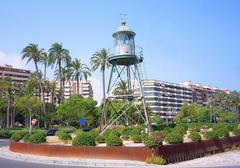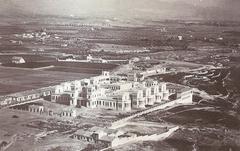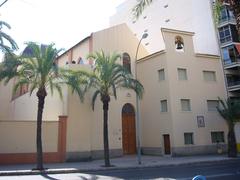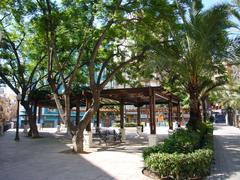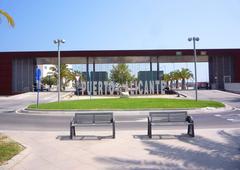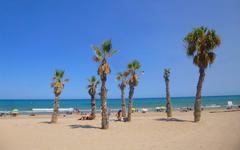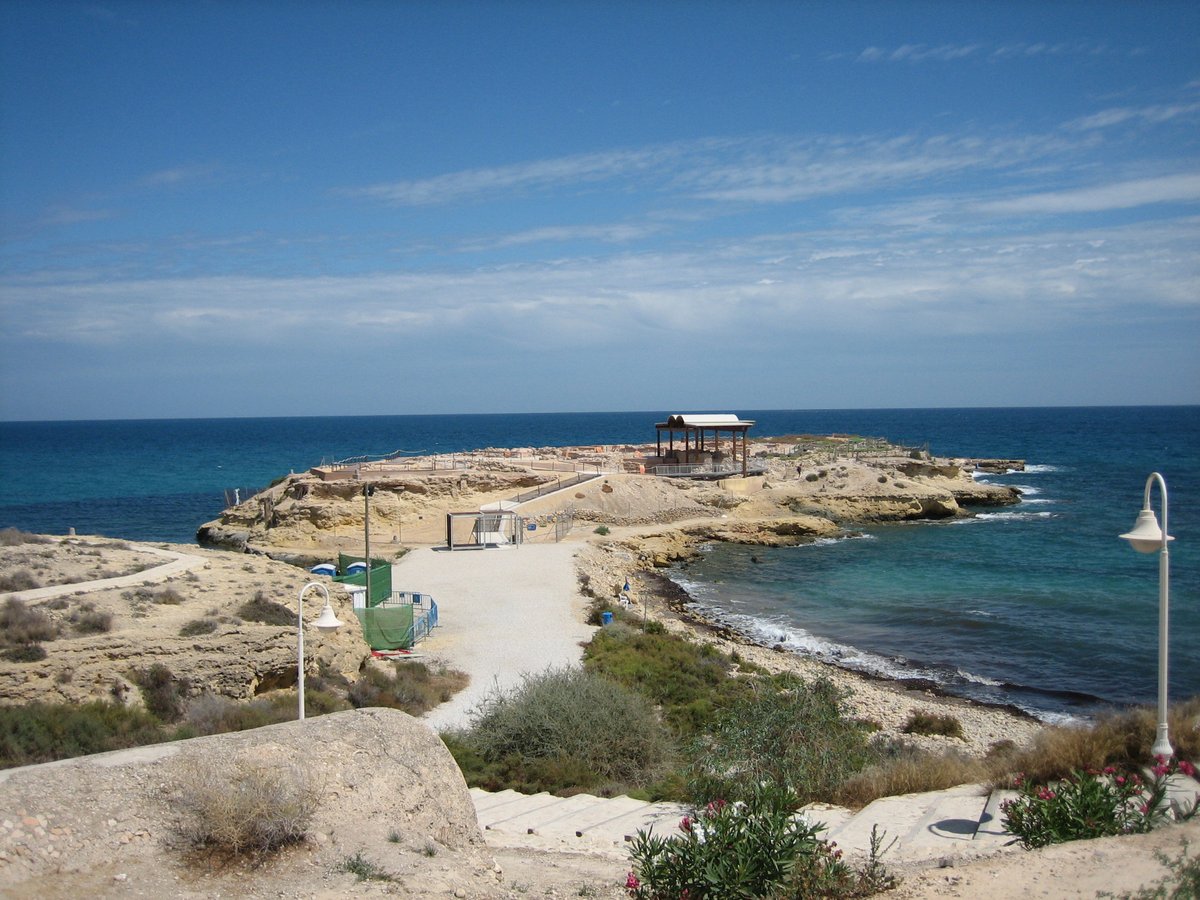
Comprehensive Guide to La Illeta dels Banyets, Alicante, Spain
Date: 19/07/2024
Introduction
La Illeta dels Banyets in Alicante, Spain, is an archaeological gem that offers a fascinating window into the past. This small islet, accessible via a narrow isthmus, has been an important site of human settlement and activity for millennia. Its rich tapestry of history spans from the Bronze Age to the Roman era, making it a vital location for understanding the cultural and historical evolution of the region. Visitors to La Illeta dels Banyets can explore remarkably well-preserved ruins, including ancient dwellings, Roman baths, and a necropolis, each telling a unique story of the civilizations that once thrived here. The site is not just a historical landmark but also a testament to advanced ancient engineering and cultural practices. Managed by the Museo Arqueológico Provincial de Alicante (MARQ), La Illeta dels Banyets is a protected archaeological site that offers guided tours, educational panels, and exhibits to enhance visitor understanding and appreciation of its historical significance (MARQ official site).
Table of Contents
- Introduction
- Visiting Information
- A Journey Through Time - Archaeological Periods
- The Roman Baths - A Glimpse into Ancient Luxury
- Beyond the Baths - Other Notable Discoveries
- Preserving the Past for the Future
- FAQ
- Conclusion
Visiting Information
Visiting Hours
La Illeta dels Banyets is open to the public from 10 AM to 6 PM, Tuesday to Sunday. The site is closed on Mondays and public holidays.
Tickets
General admission tickets are priced at €5 for adults, €3 for students and seniors, and free for children under 12. Tickets can be purchased at the entrance or online through the official MARQ website.
Travel Tips
The site is easily accessible by car or public transport from Alicante city center. Adequate parking is available nearby. Comfortable walking shoes and sun protection are recommended due to the outdoor nature of the site.
Nearby Attractions
Combine your visit with a trip to the Museo Arqueológico Provincial de Alicante (MARQ) or the beautiful beaches of El Campello, both located nearby.
Accessibility
The site has been adapted to be accessible for visitors with reduced mobility, including paved pathways and ramps.
A Journey Through Time - Archaeological Periods
The Bronze Age (c. 2000-1000 BCE)
The earliest evidence of human presence on La Illeta dates back to the Bronze Age. Excavations have unearthed ceramic fragments and remnants of dwellings, indicating a settlement engaged in fishing and agriculture. These early inhabitants likely chose the islet for its strategic location and natural resources.
The Iberian Period (6th-1st century BCE)
During the Iberian period, La Illeta witnessed the rise of a significant settlement. The Iberians, known for their distinctive pottery and metalwork, established a thriving community on the islet. Archaeologists have uncovered remnants of houses, workshops, and a necropolis, providing valuable insights into their daily lives, social structures, and burial practices. The presence of imported goods suggests that the Iberian settlement was involved in trade networks spanning the Mediterranean.
The Roman Era (1st century BCE - 5th century CE)
The arrival of the Romans in the 1st century BCE marked a turning point in La Illeta’s history. The islet became integrated into the Roman Empire, and its strategic coastal location transformed it into a bustling port. The Romans recognized the potential of La Illeta’s natural hot springs, establishing a thriving complex dedicated to leisure and well-being.
The Roman Baths - A Glimpse into Ancient Luxury
The Roman baths, or “baños” in Spanish, are the most prominent and well-preserved feature of La Illeta, lending the islet its name, “La Illeta dels Banyets” – “The Islet of the Little Baths.” These baths were more than just a place to cleanse the body; they were a social hub, a place for relaxation, and a testament to Roman engineering and architectural prowess.
The bath complex features a series of interconnected rooms with distinct functions, including:
- The Apodyterium (Changing Room): Where bathers would store their clothes before entering the bathing areas.
- The Tepidarium (Warm Room): A moderately heated room designed for relaxation and acclimatization.
- The Caldarium (Hot Room): Featuring a hot bath and often a steam room, this area promoted sweating and cleansing.
- The Frigidarium (Cold Room): A room with a cold plunge pool, intended to invigorate the body after the heat of the caldarium.
The baths were ingeniously designed to utilize natural hot springs, channeling the thermal waters through a system of hypocausts – underfloor heating systems – to maintain the desired temperatures in different rooms. The remains of these hypocausts, along with the layout of the rooms and the discovery of ceramic pipes, offer valuable insights into Roman engineering and bathing practices.
Beyond the Baths - Other Notable Discoveries
While the Roman baths are undoubtedly the star attraction, La Illeta holds other archaeological treasures that contribute to its historical significance:
- The Iberian Sanctuary: Excavations have revealed the remains of an Iberian sanctuary, suggesting the islet’s religious importance even before the Roman period.
- The Roman Villa: The remnants of a Roman villa, likely belonging to a wealthy family, have been discovered on the islet. This discovery sheds light on the lifestyle of the Roman elite who resided in this coastal settlement.
- The Necropolis: Burial sites from different periods, including Iberian and Roman, have been unearthed on La Illeta. These findings offer valuable information about burial customs, social structures, and the transition between cultures over time.
Preserving the Past for the Future
Today, La Illeta dels Banyets is a protected archaeological site, managed by the Museo Arqueológico Provincial de Alicante (MARQ). The site is open to the public, offering visitors a unique opportunity to step back in time and explore the remnants of these ancient civilizations. The MARQ houses a dedicated exhibition showcasing artifacts recovered from La Illeta, providing further context and insights into the islet’s rich history.
FAQ
Q: What are the visiting hours for La Illeta dels Banyets? A: The site is open from 10 AM to 6 PM, Tuesday to Sunday, and is closed on Mondays and public holidays.
Q: How much do tickets cost? A: General admission tickets are €5 for adults, €3 for students and seniors, and free for children under 12.
Q: How can I get to La Illeta dels Banyets? A: The site is accessible by car or public transport from Alicante city center, with parking available nearby.
Q: Are there any nearby attractions? A: Yes, you can visit the Museo Arqueológico Provincial de Alicante (MARQ) and the beaches of El Campello.
Conclusion
Visiting La Illeta dels Banyets is not just a trip to a scenic islet; it’s a journey through time, offering a captivating glimpse into the lives and cultures of those who came before. The site’s well-preserved ruins, coupled with the informative exhibits at the MARQ, provide a fascinating and educational experience for history enthusiasts and curious travelers alike. Don’t forget to download our mobile app Audiala for more updates and to enhance your visit.
Call to Action
For more information on La Illeta dels Banyets, visiting hours, and ticket prices, visit the official MARQ website. Follow us on social media for the latest updates and travel tips.
References
- Museo Arqueológico Provincial de Alicante (MARQ), “Official Website,” 2024, https://www.marqalicante.com


